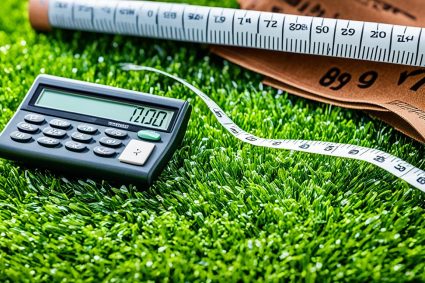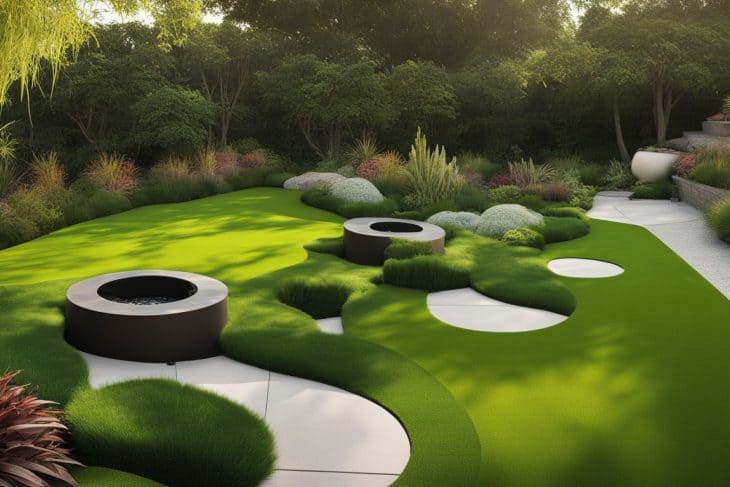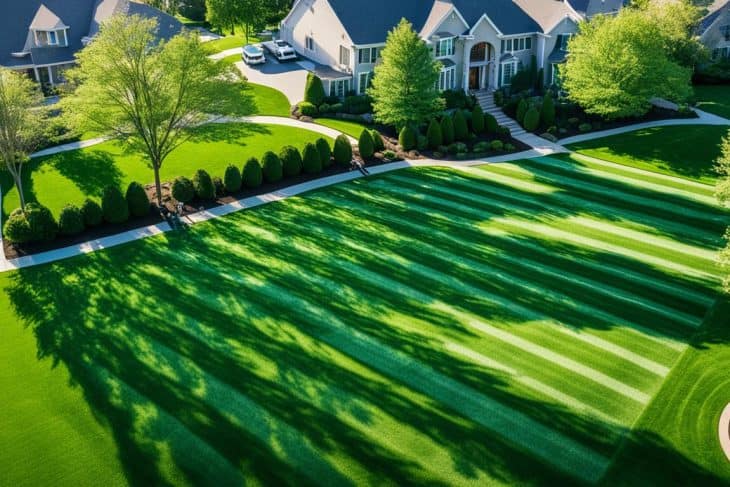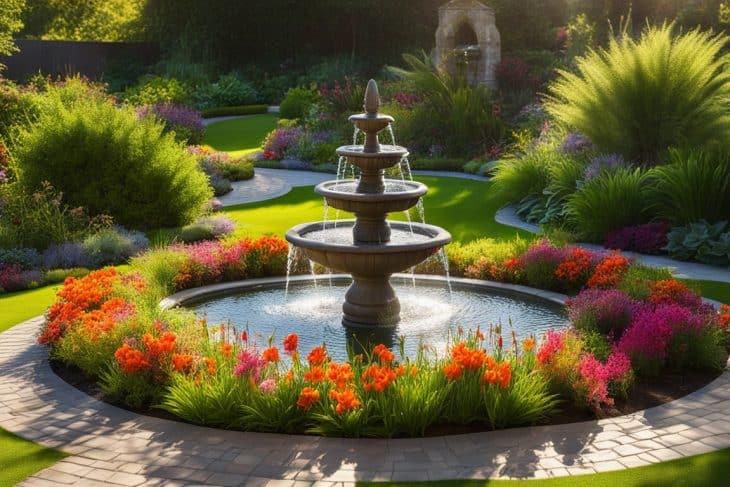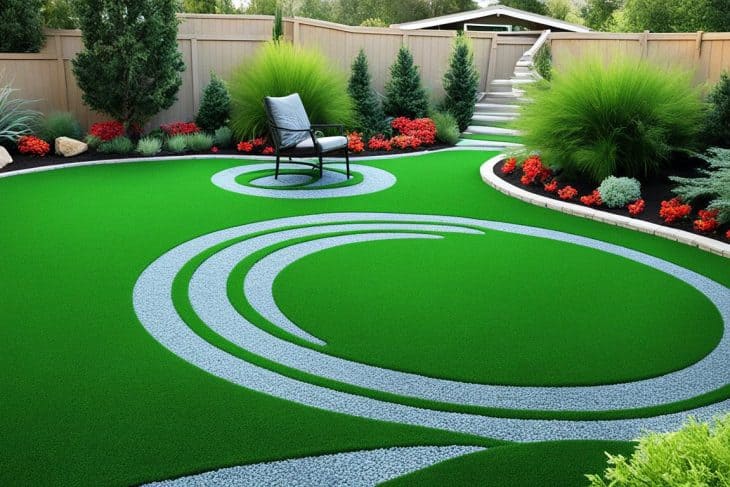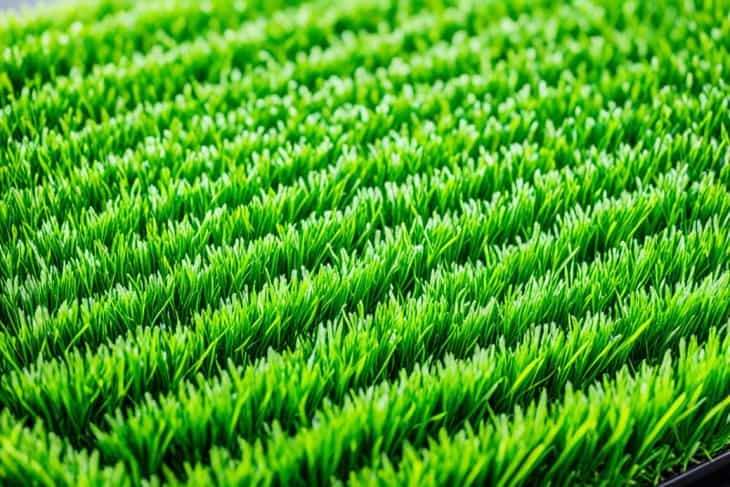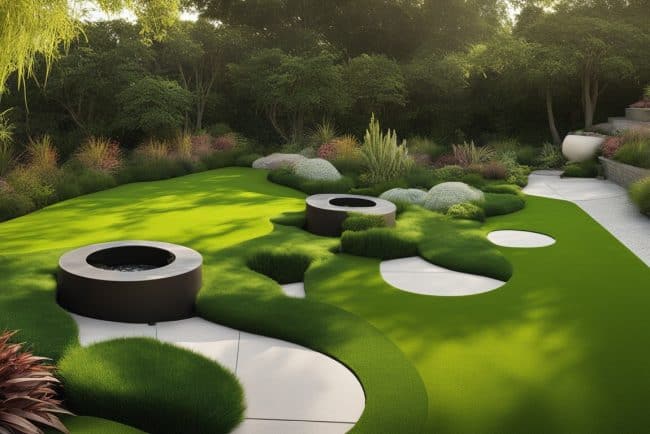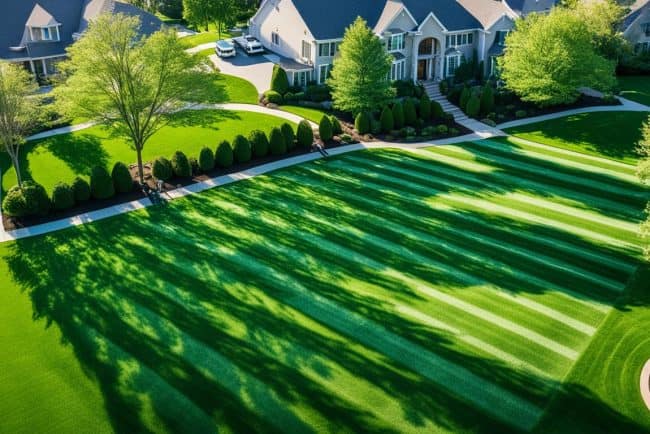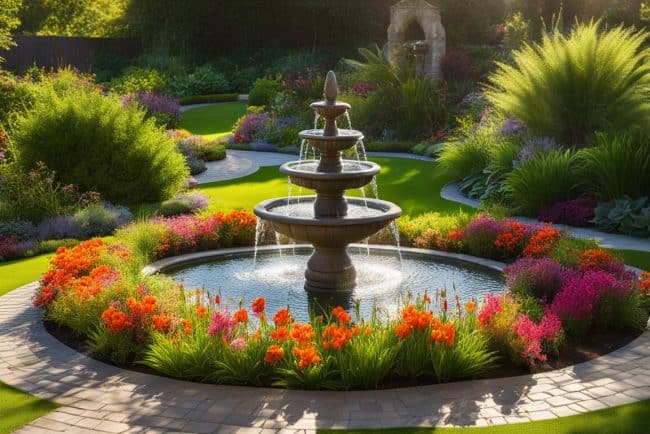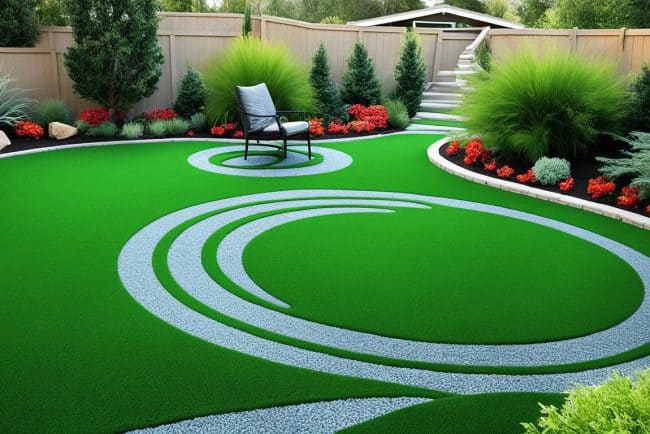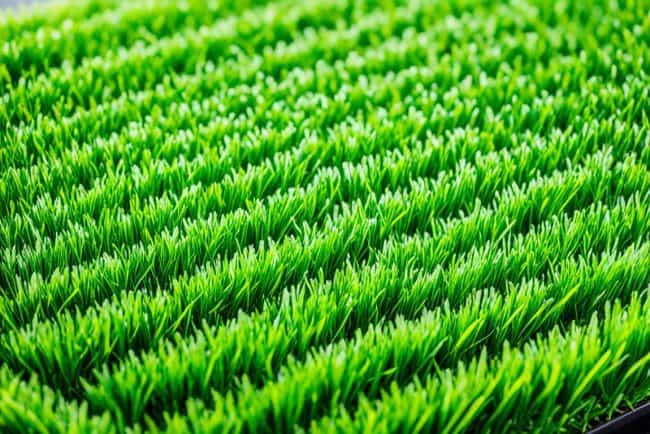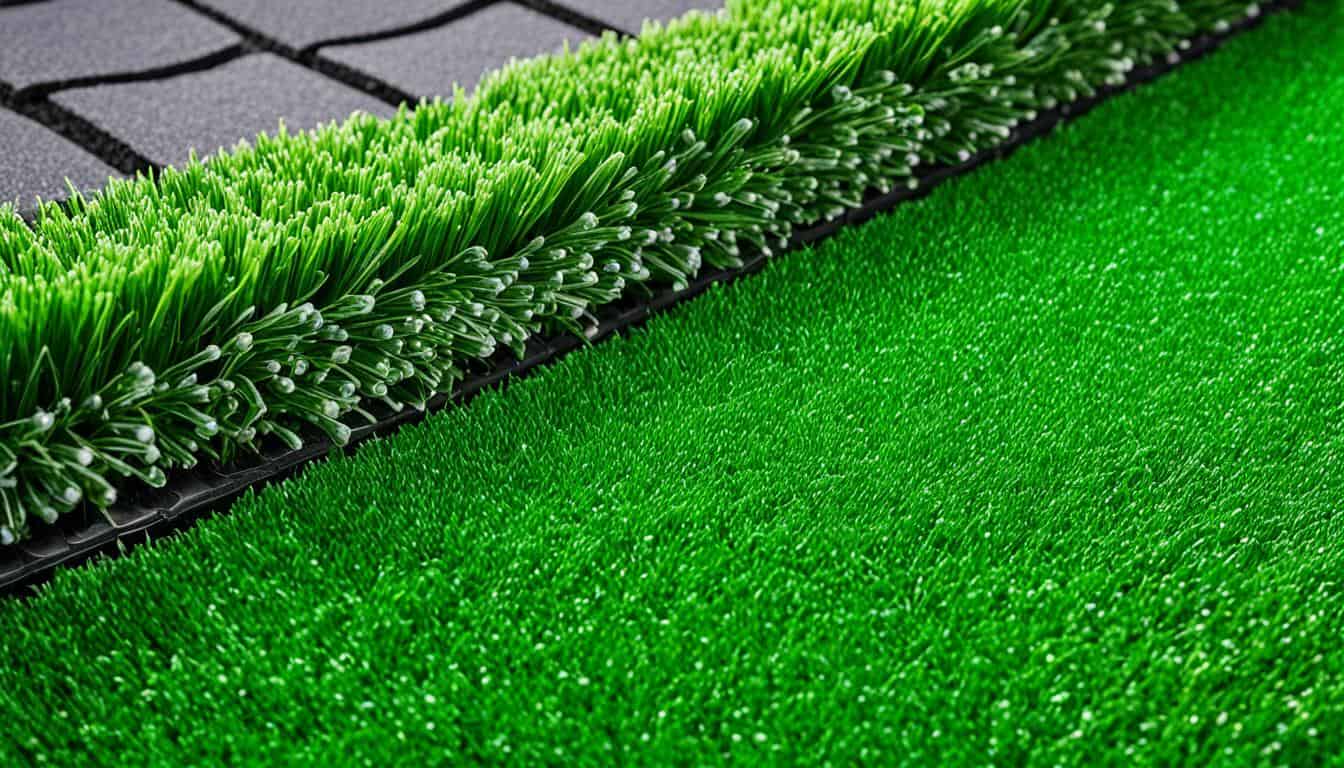
As I sat in my backyard, the hours spent on lawn care seemed endless. Mowing, watering, and fertilizing took up so much time. That’s when I thought about artificial lawns. After much research, I found the cost of artificial grass in San Diego averages between $7 to $12 per square foot. This investment could free me from maintenance chores while keeping my yard beautiful all year.
This guide will help you understand the costs. It covers yard size, material types, and labor costs. It’s made for homeowners and business owners. The aim is to provide vital information for wise decisions.
Understanding Artificial Grass and Its Appeal
Artificial grass is now a popular choice for outdoor areas. It looks and feels like natural grass but is synthetic. People love its always green look, how tough it is, and how much time and money they save on upkeep.
The love for synthetic turf is strong among both home and business owners. Homeowners alone spend about $600 billion a year on natural lawn care. That big number covers watering, feeding, and cutting the grass. It also includes the harm from using chemicals and gas tools.
Many choose low-maintenance lawns of synthetic turf for reasons like:
- It saves a lot of water because you don’t have to water it.
- It’s cheaper to keep up, with average yearly costs for a natural lawn at about $1,755.
- It looks good all year round, no matter the season.
- It can handle lots of walking and playing without getting ruined.
- It doesn’t make allergies worse, which is great for people allergic to grass.
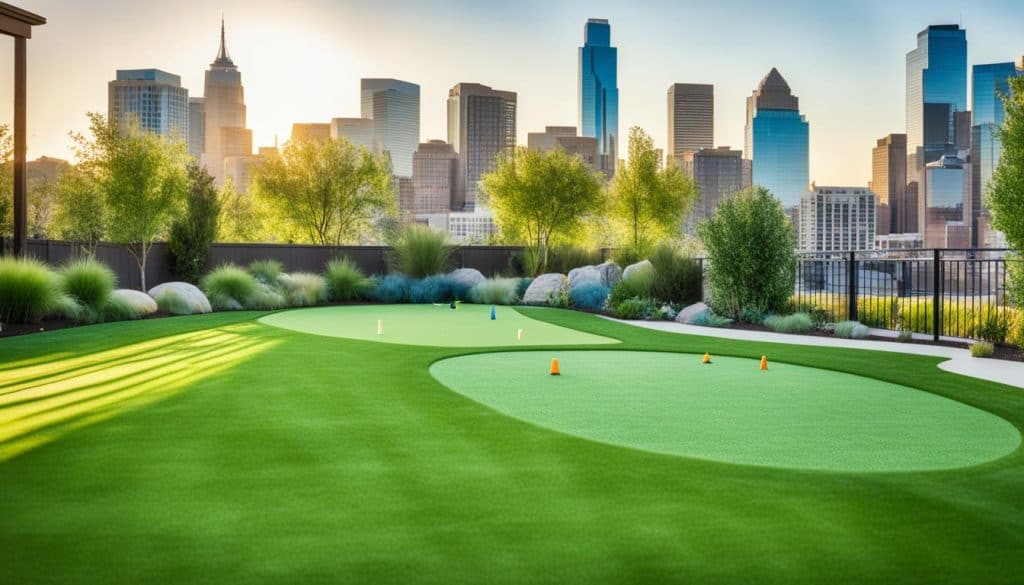
Artificial turf can last between 15 and 20 years. This depends on the material, how much it’s used, and the weather. Its long life is another plus, making it a smart pick for those fed up with constant lawn work. Choosing synthetic turf means having a nice yard and helping the planet.
Factors Influencing the Cost of Installing Artificial Lawn
When you think about putting in synthetic turf, a few key things affect the price. Factors like materials and how they’re installed matter a lot. Knowing what influences costs helps you plan your budget.
Yard Size and Shape
The yard size impact is important to think about. Costs usually depend on how many square feet you’re covering. A typical job might be 500 square feet, costing between $7,400 and $9,350 for decent quality turf. If your yard isn’t a simple shape, you might pay up to 20% more. Curvy or sloped yards make installation trickier and pricier.
Labor Costs and Installation Types
Labor takes up a lot of the project’s budget, about half to 60%. The cost changes with the job’s complexity and how long it takes. You might spend $4 to $25 for each square foot on labor. Bigger or complicated jobs can take a week, but small ones might only need a day or two.
Installation Location
Where you want the turf also impacts the price. Front yards, backyards, and roofs all have different costs. Front yards are usually $10 to $15 per square foot. Roofs might cost $15 to $25 per square square foot. Certain places might need more work, adding to the total cost. It’s smart to think about your site’s needs.
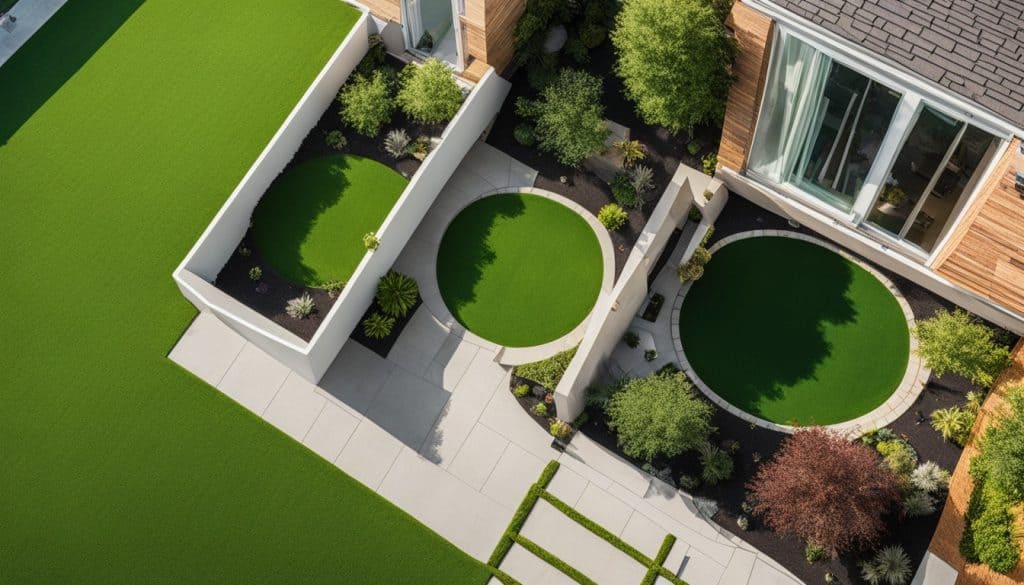
Average Costs of Artificial Lawn Installation
Understanding the average costs of artificial lawn installation is key. Many factors play a role in these costs. These include the type of turf chosen and your property’s unique needs.
Cost Per Square Foot Overview
The average artificial grass costs range from $9 to $15 per square foot. For a 500 square foot project, you might pay around $7,350. This equals about $14.7 per square foot.
For larger projects, costs per square foot can drop. A 1,000 square foot area may cost around $12,360, or $12.4 per square foot. And a 2,500 square foot area might cost about $23,000, or $9.2 per square foot. Choosing larger installations can save money.
Variability Based on Material Type
Different artificial turfs have different turf material costs. Polyethylene turf ranges from $2.25 to $4.50 per square foot. Polypropylene turf costs between $2 and $6.50. Nylon turf, a premium option, is priced between $5.05 and $7.
Knowing the cost differences helps manage your budget. It aids in choosing the right material for your needs and wallet.
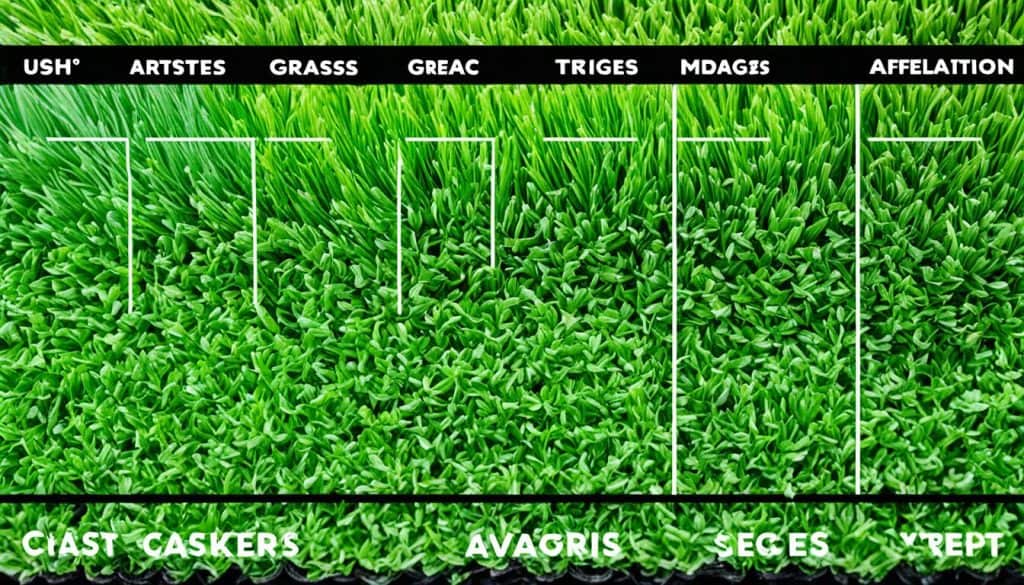
Cost Planning Guide for Synthetic Grass Expenses
When planning to install synthetic grass, it’s key to create a detailed budget. It’s important to know the costs for different types of turf. This helps you understand the whole cost of synthetic grass and its future impact.
Budget Analysis for Different Turf Types
The price of artificial grass changes based on its quality and type. Installation costs usually are between $5 to $20 per square foot. So, you might spend about $5,000 for an average setup. Looking at material costs, medium to high-quality artificial grass costs $2 to $6 per square foot.
Remember to include about 10%-20% for waste in your budget. This waste will influence your total cost.
There are also other materials you’ll need:
- Class II road base for $0.32 per square foot
- Weed barrier fabric for $68.00 per 1,500 square foot roll
- Bender board edging for $15.80 per 20 feet by 4 inches roll
- About $190 for glue, nails, and stakes for a 1,000-square-foot project
Long-term Savings Compared to Natural Grass
Choosing synthetic grass can save money over time compared to natural grass. The upfront cost is high, but you’ll spend less on maintenance. Natural grass needs a lot of care, like watering, fertilizing, and mowing, which adds up.
Synthetic grass cuts down on:
- Water use, which lowers your utility bills
- The need for fertilizers or pesticides
- Mowing, saving you time and money
Over 10 to 25 years, these benefits can lead to big savings. Plus, you get a lawn that looks good without much work. Looking at all costs, the switch to synthetic grass makes financial sense.
Breakdown of Additional Costs to Consider
Installing artificial grass comes with extra costs. It’s important to think about costs like infill materials and drainage systems. These can change your budget and how the grass works over time.
Infill Materials and Drainage Systems
The kind of infill materials you choose matters a lot. It affects the price, drainage, and life of your turf. You can pick from sand, rubber, or organic materials. Each has its pros and cons.
It’s critical to have a good drainage system for your turf. This prevents water buildup and mold. It keeps the turf ready for use. The cost for the infill and drainage can really affect the total cost.
Maintenance Costs Over Time
Long-term maintenance costs of artificial grass should not be overlooked. Tasks like cleaning and brushing are needed. At times, you must replace the infill too. Even though it’s easier than natural grass, it still needs care.
In your budget, remember these upkeep costs. This will prevent any surprises. By understanding these costs, you can make a smarter choice about your turf.
DIY Installation vs. Professional Services
Should I install artificial grass myself or hire a pro? This choice involves looking at costs and other key factors. Both options have pros and cons that affect how happy I’ll be with the outcome.
Cost Comparisons and Savings Potential
DIY artificial grass installation can save me money. By doing it myself, I avoid paying for labor, which is a big part of the cost. But, I need to think about the time and tools needed. Lacking experience could also lead to expensive mistakes.
Here are some important things to compare:
- Savings from labor: DIY means I don’t pay professional installers by the hour.
- Tool costs: I have to buy specific tools, raising my expenses.
- Time factors: It will likely take me longer to install than experts.
- Skill level: If I’m not skilled, I might make mistakes that cost more later.
Benefits of Hiring Professional Installers
Hiring pros for installation costs more at first but has clear benefits. Their expertise means the job meets high standards, reducing future issues. They know how to handle tricky parts of installing artificial grass.
Consider these advantages of going pro:
- Expert guidance: Professionals share their know-how on the best installation techniques.
- Time efficiency: They get the job done fast, freeing up my schedule.
- Quality assurance: Many offer work guarantees, giving me peace of mind.
- Avoiding pitfalls: Their experience helps avoid common mistakes I might not anticipate.
Environmental Considerations and Long-term Value
Installing artificial grass comes with big wins for the environment. One big plus is using much less water. In places where water is scarce, artificial turf means we don’t need to water lawns all the time. It also stops the need for harmful chemicals that can hurt local water and wildlife.
Artificial grass isn’t just about looking good. It means we use fewer gas-powered tools, which helps lower pollution. Big companies are getting on board, too, with 96% talking about how they’re getting more sustainable. Going for synthetic grass shows we care about nature and want our yards to look good.
Choosing artificial grass is smart for both the planet and our pockets. The government is pushing for nature-friendly projects, showing us how important this is. By picking artificial lawns, we save money and help the environment. It’s time to think about how our choices affect the world.
